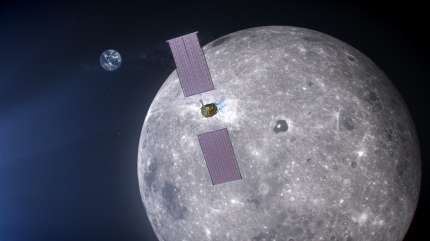
Nasa has awarded a contract to Maxar Technologies, formerly called SSL, in Westminster, Colorado, US, to develop power, propulsion and communications capabilities for its lunar Gateway.
Carrying a maximum total value of $375m, this firm-fixed-price contract includes an indefinite-delivery/indefinite-quantity portion.
The award begins with a 12-month base period of performance and is followed by a 26-month option, a 14-month option and two 12-month options.
This is one of the agency’s first steps towards its Artemis lunar exploration plans.
Nasa administrator Jim Bridenstine said: “The power and propulsion element is the foundation of Gateway and a fine example of how partnerships with US companies can help expedite Nasa’s return to the Moon with the first woman and next man by 2024.
“It will be the key component upon which we will build our lunar Gateway outpost, the cornerstone of Nasa’s sustainable and reusable Artemis exploration architecture on and around the Moon.”
The high-power, 50KW solar-electric propulsion spacecraft will be three times more powerful than the existing capabilities.
As a mobile command and service module, the Gateway provides a communications relay for human and robotic expeditions to the lunar surface, which will start at the Moon’s South Pole.
The spacecraft design will be completed during the base period, following which the exercise of options will enable the development, launch and in-space flight demonstration.
The in-space flight demonstration will last as long as one year, during which the spacecraft will be completely owned and operated by Maxar.
Once the demonstration is successful, Nasa will have the option to acquire the spacecraft for use as the first element of the Gateway.
Nasa is planning to launch the power and propulsion element on a commercial rocket in late 2022.
Nasa’s Glenn Research Center power and propulsion element project manager Mike Barrett said: “We’re excited to demonstrate our newest technology on the power and propulsion element. Solar electric propulsion is extremely efficient, making it perfect for the Gateway.
“This system requires much less propellant than traditional chemical systems, which will allow the Gateway to move more mass around the Moon, like a human landing system and large modules for living and working in orbit.”
Nasa’s lunar exploration plans are based on a two-phase approach.
The first approach is focused on speed with the aim of landing on the Moon by 2024, while the second will establish a sustained human presence on and around the Moon by 2028.
Based on what the agency learns on the Moon, it will prepare to send astronauts to Mars.


